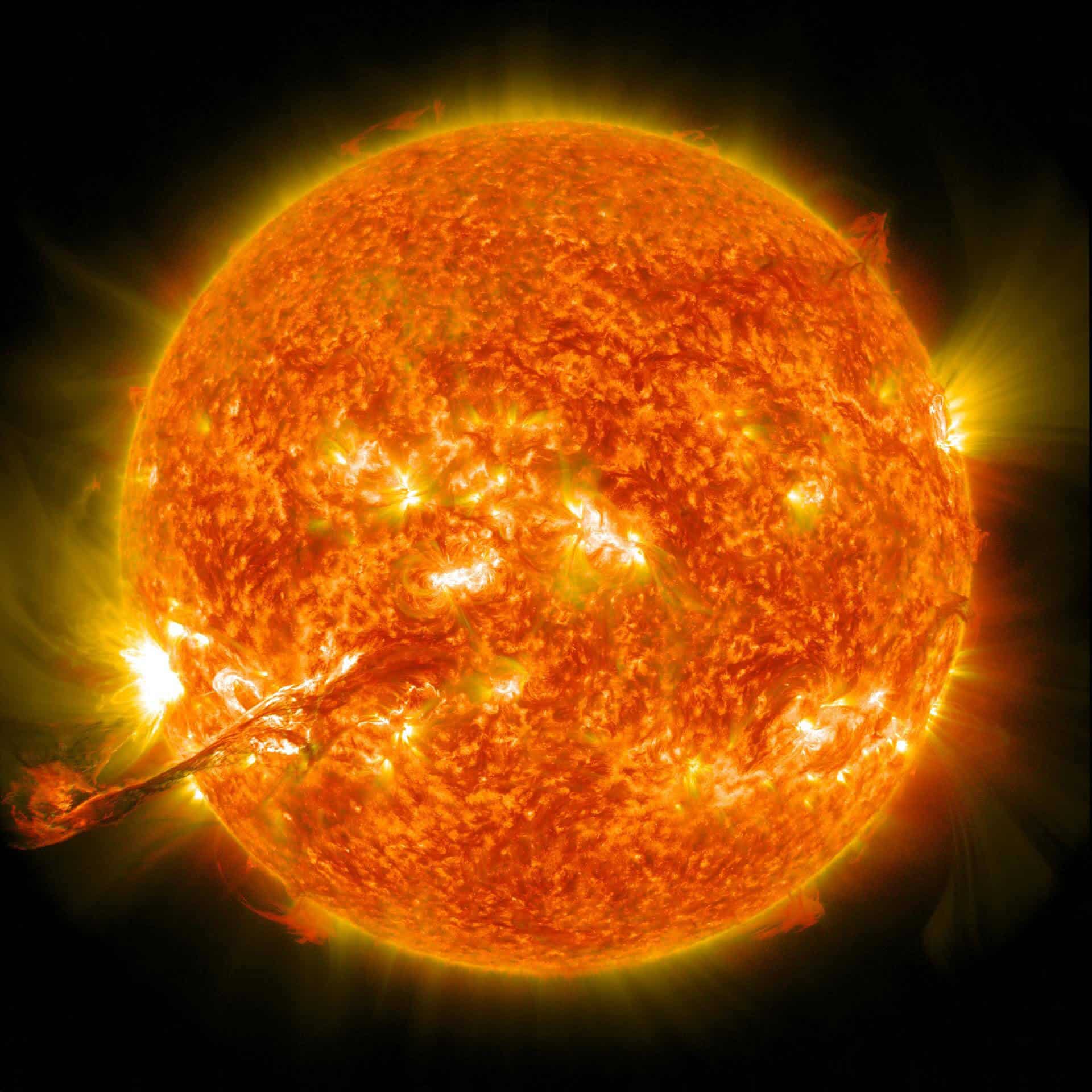Scientists are making another small step towards cracking the mysteries of space weather

A new study from the University of Colorado at Boulder could help scientists better understand the phenomena that create the "sunspots".
The sun has fascinated scientists for a long time. But this ball of super-hot plasma—the closest star to Earth—is also very difficult to study, leaving many questions unanswered.
Now the researchers have a possible answer to the solar phenomenon that has been puzzling for a long time and is known as the "heat convection puzzle". The findings, recently published in the Official Journal of the American Academy of Sciences (PNAS), open a new window into the inner workings of the Sun and may help understand space weather that affects everything from satellites to the power grid.
The sun has several distinct zones. One of them, the heat convection zone, extends over 200,000 km (200 mega-meters) more or less and makes up the outer 30 percent of the Sun. Energy created by nuclear fusion in the Sun's core moves outward towards the surface. When it reaches the heat convection zone, the energy causes the flow to swirl in eddies and spirals called convection currents.
Scientists believed that the largest of these eddies should be about the same size as the heat convection zone itself - 200,000 km - and began to look for these "giant cells", as they were called. But despite searching for many years, the researchers were unable to observe such large convective flows, hence the puzzle.
"Why were classical giant cells not observed? And why and how do the observations seem to contradict numerical models?” said Keith Joline, a professor at the University of Colorado at Boulder and head of the Department of Applied Mathematics and one of the study's co-authors.
A new study by Geoffrey Vasil, Nicholas Featherstone and Julien claims that the rotation of the sun is more important than researchers previously thought. Strong rotation creates elongated, ellipse-shaped conduction flows whose true size is 30,000 km, not 200,000.
They based this theoretical prediction on multidisciplinary equations and theories used in the fields of physics, mathematics, meteorology and oceanography.
"Actually, there are no giant cells," said Julien. "This opinion that they believed in for a long time or the hunt for them were a distraction. The rotation gives a different structure to the flow of currents, the maximum of which is of the order of 30 mega meters".
These findings are important because they offer a solution to a scientific problem that has existed for decades, Julien said.
"The sun is the giver of life, but it also has many strange things," said Jolain. "Our universe is made up of stars and we know that stars are also connected to planetary systems, so understanding the planetary system closest to us and the star closest to us is very important from a general scientific point of view - where do we come from? And how did we get there?"
More of the topic in Hayadan:

6 תגובות
Addington managed to convince everyone and himself of something that we can never confirm or disprove. What is certain is that the observations will not fit the theory because it is a theory from the era of carriages and horses, gas and steam. The sun emits all the elements in the periodic table. And it is impossible to treat it as a hot gas and suddenly call it plasma without falsifying the theory from the ground up. Patches will not help here. A whole new paradigm is needed. The electric universe
Sunspots operate in 11 year cycles. They still do but the level from which they rise and fall is constantly rising due to human activity.
But the "warming" lobby will never mention that sunspots are the real cause of global warming...
Everything is in the Gemara, you don't need to research, just study it and you will know everything
Can't believe I wasted the time to read this.
Zero general importance.
Van Gogh saw it before all the scientists.